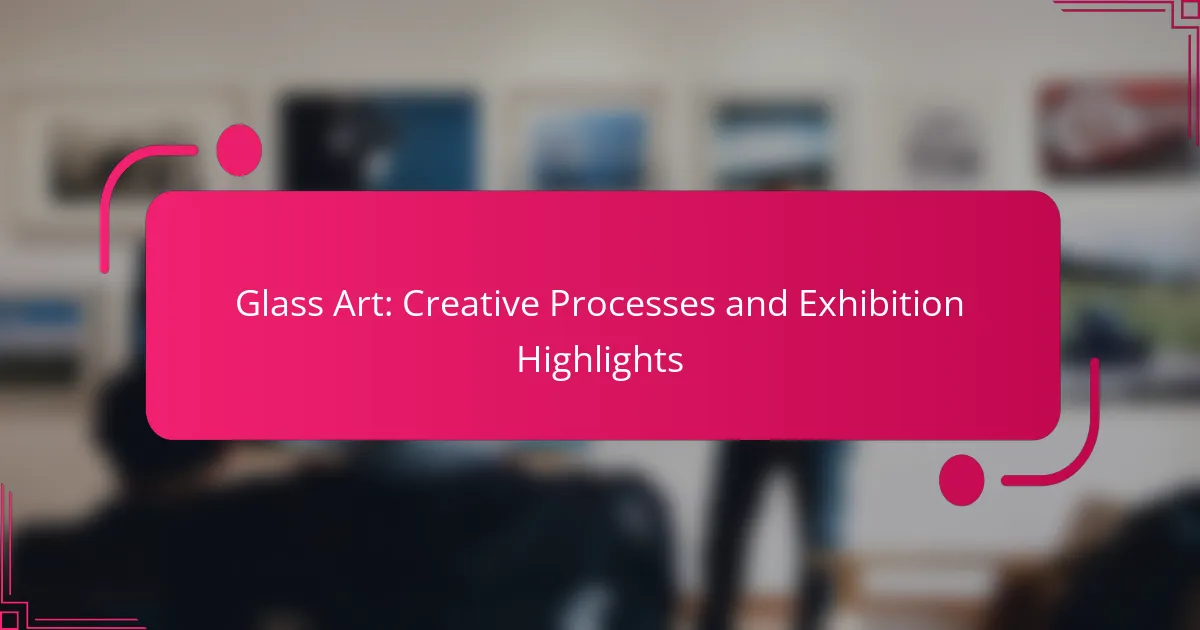Glass art captivates with its creative processes and diverse techniques. Explore fundamental methods like blowing, casting, fusing, and engraving. Discover highlights from notable exhibitions in 2025, showcasing both traditional and contemporary approaches. Learn about regional influences and the importance of sustainable practices in glass art production.
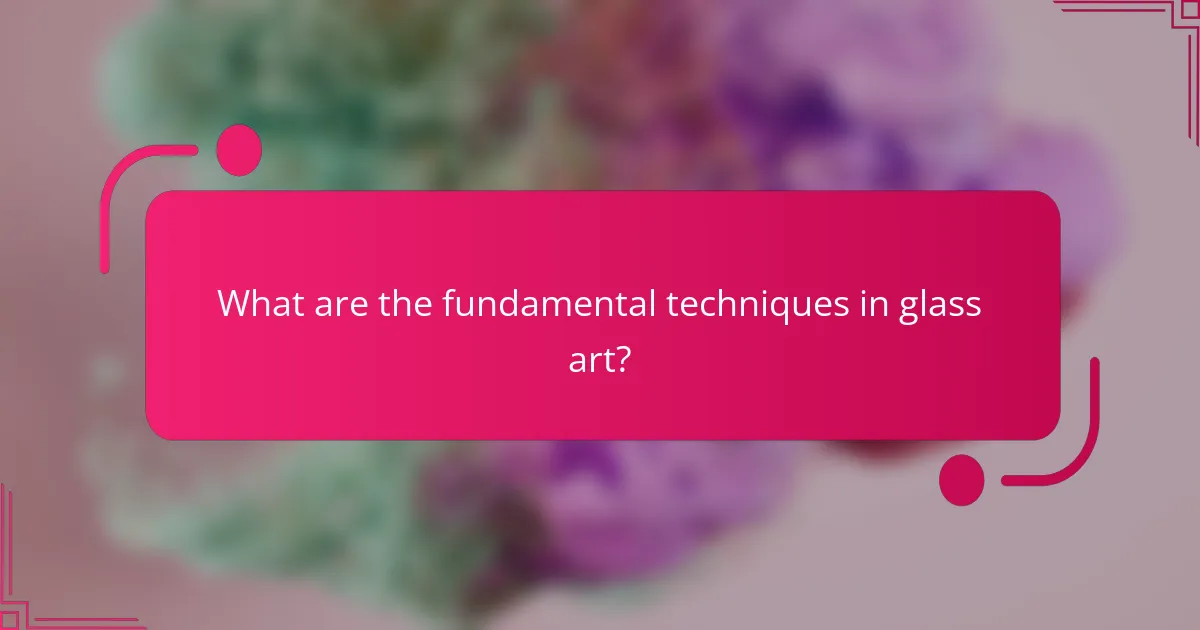
What are the fundamental techniques in glass art?
The fundamental techniques in glass art include blowing, casting, fusing, and engraving. Each technique offers unique creative possibilities and contributes to the overall artistry of glass.
Glass blowing involves shaping molten glass into forms using air pressure, while casting involves pouring molten glass into molds to create solid objects. Fusing combines glass pieces at high temperatures to create flat or three-dimensional designs. Engraving adds intricate patterns or images to the glass surface, enhancing its visual appeal.
These techniques highlight the versatility of glass as a medium, allowing artists to explore various forms and expressions.
How does glassblowing create unique forms?
Glassblowing creates unique forms through the manipulation of molten glass, allowing artists to shape and customize their designs. The process involves heating silica sand and other materials to high temperatures, making the glass pliable. Artists use tools to blow, shape, and stretch the glass, resulting in distinctive forms that showcase individual creativity. Variations in temperature, technique, and materials contribute to the uniqueness of each piece, making glass art a highly individualized expression. The skill and artistry involved ensure that no two creations are exactly alike.
What role does kiln casting play in glass art?
Kiln casting is essential in glass art as it allows artists to create intricate and detailed forms. This technique involves pouring molten glass into a mold, which is then heated in a kiln to achieve the desired shape and finish. Kiln casting provides artists with the ability to explore complex designs and textures that are difficult to achieve through other methods. The process also allows for the incorporation of various materials, enhancing the artistic expression. As a result, kiln casting plays a pivotal role in expanding the creative possibilities within the realm of glass art.
Which tools are essential for glass artists?
Essential tools for glass artists include glassblowing pipes, kilns, and torches. These tools enable the shaping, heating, and cooling processes crucial for creating intricate glass art. Additional tools like molds, grinders, and safety gear enhance the creative process and ensure safety during production.
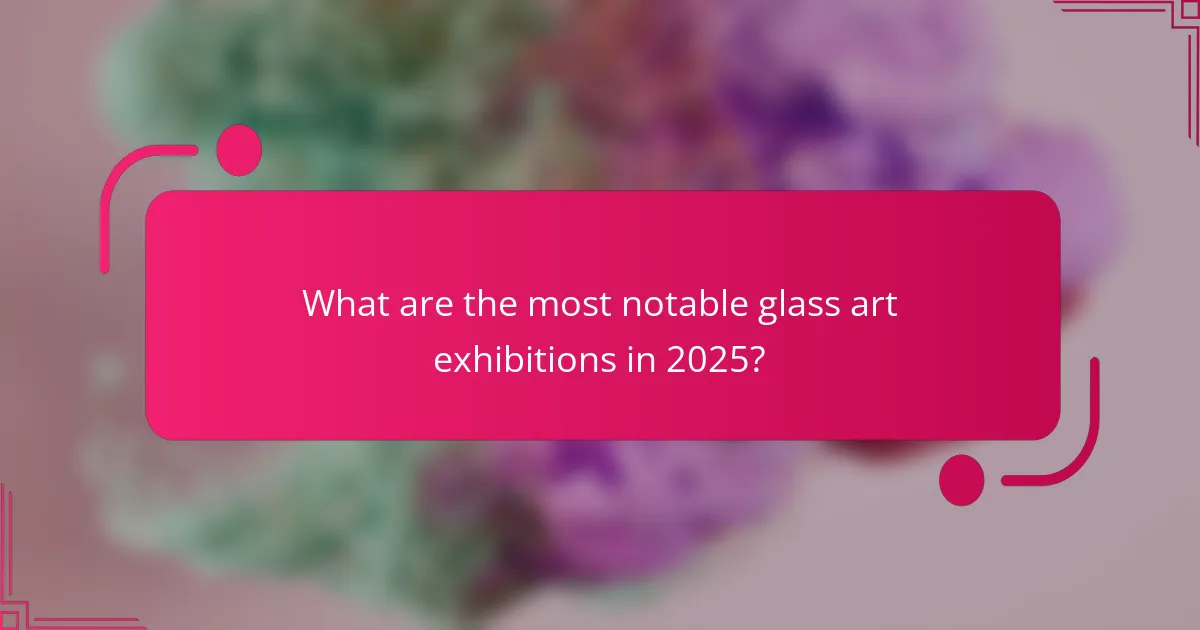
What are the most notable glass art exhibitions in 2025?
The most notable glass art exhibitions in 2025 include the Venice Glass Week, the Corning Museum of Glass Annual Exhibition, and the New York City Glass Art Festival. Each event showcases innovative glass techniques and prominent artists, emphasizing the evolving nature of glass as an artistic medium. The Venice Glass Week will highlight traditional glassblowing, while the Corning Museum will feature contemporary installations. The New York City Festival will present interactive glass art experiences, attracting a diverse audience.
How do cultural influences shape glass art displays?
Cultural influences significantly shape glass art displays through themes, techniques, and materials. Artists often draw inspiration from their heritage, integrating traditional motifs and methods, which reflect their cultural narratives. For instance, Japanese glass art showcases intricate designs and techniques influenced by centuries-old practices, emphasizing harmony with nature. In contrast, contemporary Western glass art may focus on abstract forms, highlighting individual expression and innovation. This interplay of culture and creativity enriches the viewer’s experience, making each display a unique reflection of its cultural context.
What trends are emerging in global glass art exhibitions?
Emerging trends in global glass art exhibitions include increased focus on sustainability, innovative techniques, and cross-disciplinary collaborations. Artists are incorporating recycled materials, emphasizing eco-friendly practices. The use of technology, such as augmented reality, enhances viewer engagement. Additionally, exhibitions are showcasing diverse cultural influences, reflecting a global perspective in contemporary glass art.
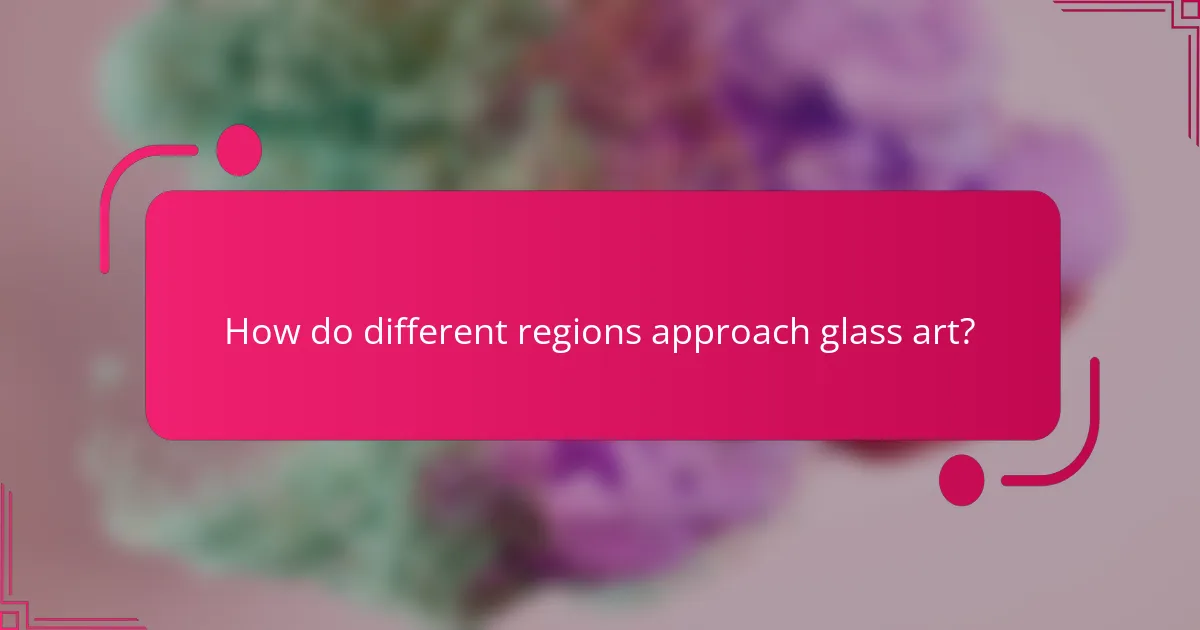
How do different regions approach glass art?
Different regions approach glass art through distinct cultural influences and techniques. For instance, Venetian glass art emphasizes intricate designs and traditional methods, reflecting centuries of craftsmanship. In contrast, American glass art often showcases innovative techniques and contemporary themes, highlighting artistic expression. Japanese glass art frequently combines traditional aesthetics with modern interpretations, focusing on harmony and nature. Each region’s unique attributes shape its glass art practices, creating a rich tapestry of styles and expressions globally.
What are the signature styles of North American glass artists?
North American glass artists exhibit diverse signature styles, often reflecting regional influences and personal creativity. Techniques like blown glass, fused glass, and cast glass are prominent. Artists such as Dale Chihuly are known for large-scale installations, while others focus on intricate, smaller pieces. Unique attributes include the use of color, texture, and innovative forms. This variety highlights the rich cultural tapestry of glass art in North America.
How does European glass art reflect historical influences?
European glass art reflects historical influences through techniques and styles that evolved over centuries. The integration of regional motifs and the use of local materials showcase cultural narratives. For instance, Venetian glass artisans pioneered intricate designs, influencing European aesthetics. Additionally, glass art movements, like Art Nouveau, drew inspiration from nature and historical art forms, emphasizing craftsmanship. These elements collectively highlight how historical contexts shape contemporary glass art.
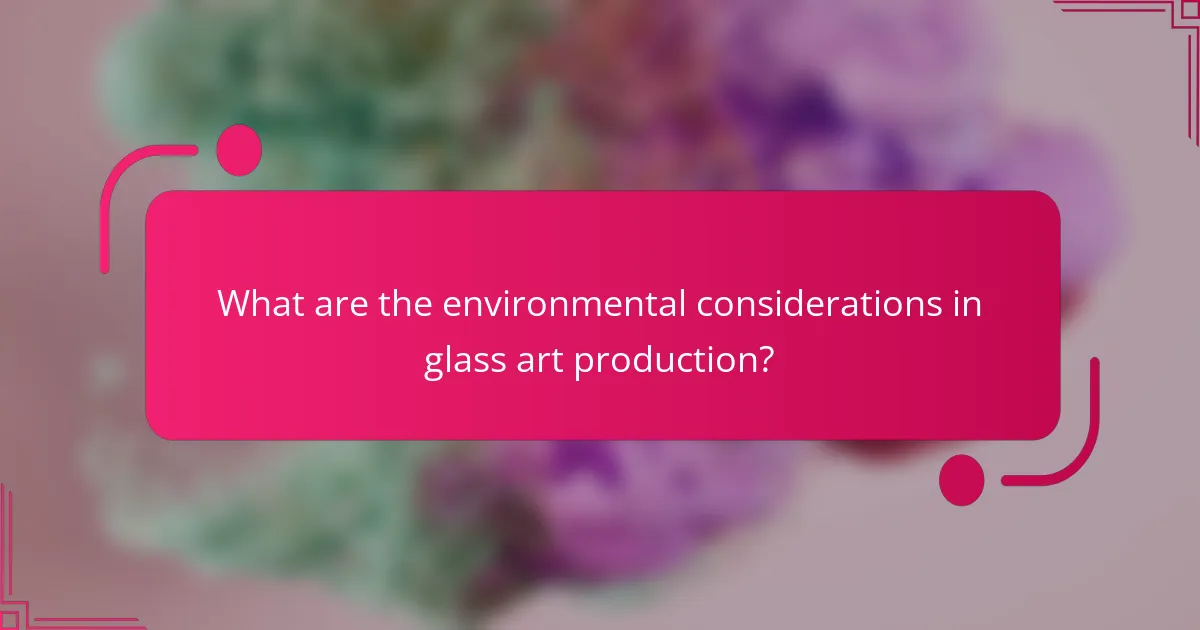
What are the environmental considerations in glass art production?
Glass art production involves significant environmental considerations, particularly in materials and energy use. The primary impact arises from the high energy consumption during glass melting, which can lead to greenhouse gas emissions. Many artists are now opting for sustainable practices, such as using recycled glass, which reduces the demand for raw materials and energy.
Additionally, the choice of pigments and additives can affect the environmental footprint. Artists are increasingly aware of toxic substances in traditional materials and are exploring eco-friendly alternatives. The production process also generates waste, prompting artists to implement recycling and waste reduction strategies.
By prioritizing sustainable materials and practices, glass artists can minimize their ecological impact while creating beautiful works. This shift not only benefits the environment but also appeals to environmentally conscious consumers.
How can glass artists adopt sustainable practices?
Glass artists can adopt sustainable practices by utilizing eco-friendly materials and energy-efficient techniques. They can source recycled glass, reducing waste and resource consumption. Implementing efficient production methods minimizes energy use, while designing for durability extends the life of their creations. Collaborating with local suppliers reduces transportation emissions, enhancing sustainability. Embracing these practices not only benefits the environment but also appeals to eco-conscious consumers.
What innovations are being made in eco-friendly glass materials?
Innovations in eco-friendly glass materials focus on sustainability and reducing environmental impact. Advances include the use of recycled glass, which minimizes raw material extraction and energy consumption. Additionally, manufacturers are developing bio-based glass alternatives that utilize renewable resources. These innovations enhance the durability and functionality of glass while promoting a circular economy. As a result, eco-friendly glass materials are becoming increasingly popular in art and design, aligning with contemporary environmental values.

Which glass art pieces are considered rare or unique?
Unique and rare glass art pieces often include works by renowned artists, limited editions, or pieces featuring intricate techniques. Notable examples are Murano glass sculptures, Tiffany stained glass, and contemporary pieces with innovative designs. Each of these showcases unique attributes, such as historical significance, craftsmanship, and artistic vision, making them highly sought after by collectors.
What makes contemporary glass sculptures stand out?
Contemporary glass sculptures stand out due to their innovative techniques and unique aesthetics. Artists utilize advanced methods like kiln casting and glassblowing to create intricate forms. The interplay of light and transparency enhances visual impact, making each piece dynamic. Furthermore, contemporary glass art often incorporates mixed media, adding depth and context to the sculptures. This fusion of traditional craftsmanship with modern concepts sets contemporary glass sculptures apart in the art world.
How do limited edition glass artworks impact collectors?
Limited edition glass artworks significantly enhance collectors’ value perception and investment potential. These unique pieces often feature distinctive attributes, such as intricate designs and limited availability, which create a sense of exclusivity. As a result, collectors are motivated to acquire these artworks not just for aesthetic enjoyment but also for their potential to appreciate in value over time. Limited editions can foster a deeper emotional connection, as each piece tells a unique story tied to the artist’s creative process. This emotional and financial investment solidifies the importance of limited edition glass artworks in the collectors’ market.
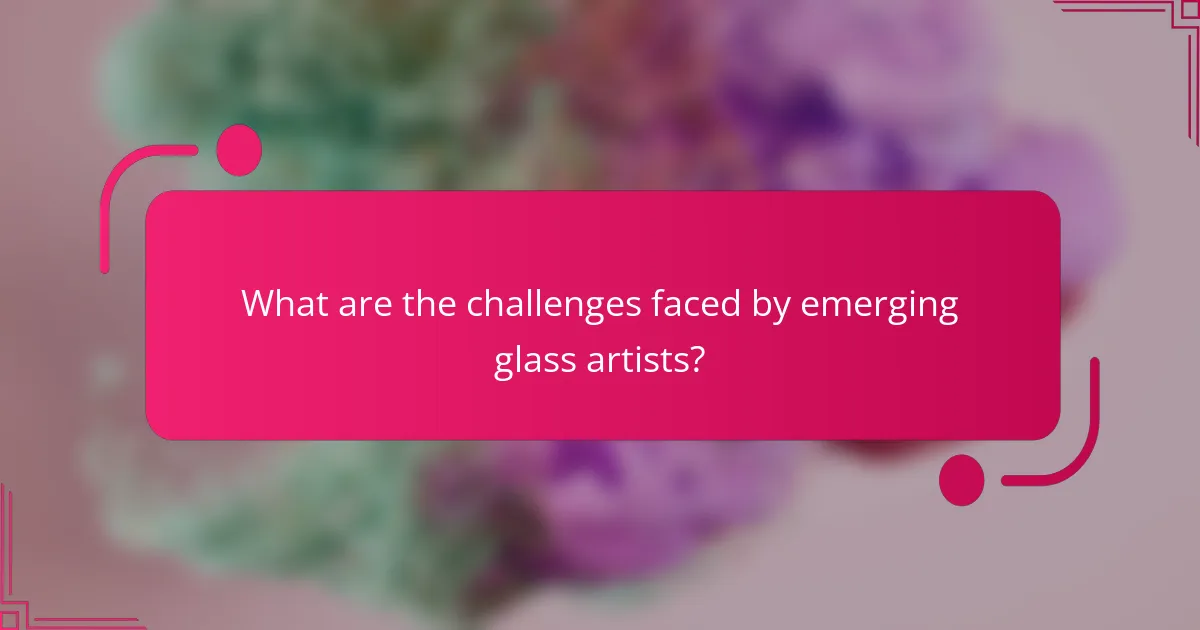
What are the challenges faced by emerging glass artists?
Emerging glass artists face challenges such as limited access to resources, high material costs, and competition in a niche market. They often struggle with finding exhibition opportunities and gaining visibility. Networking within the art community is crucial but can be difficult for newcomers. Additionally, mastering technical skills and developing a unique artistic voice requires time and persistence.
How can artists navigate the commercial aspects of glass art?
Artists can navigate the commercial aspects of glass art by understanding market trends, pricing strategies, and effective promotion techniques. Building a strong online presence through social media and personal websites enhances visibility. Networking with galleries and participating in exhibitions can lead to valuable opportunities. Additionally, mastering the business side, such as contracts and pricing, is crucial for long-term success. Collaborating with other artists can also create unique offerings that attract diverse audiences.
What common mistakes do new glass artists make?
New glass artists often make mistakes that hinder their creative process and final outcomes. Common errors include inadequate safety precautions, poor material selection, and lack of planning.
Many beginners underestimate the importance of safety gear, which is crucial when working with hot glass. They may also choose inappropriate glass types that do not suit their intended designs, leading to unsatisfactory results. Additionally, failing to plan projects can result in wasted materials and time.
Another frequent mistake is neglecting to practice essential techniques before attempting complex projects. Mastering basic skills is vital for achieving desired effects in glass art. Lastly, many new artists overlook the significance of proper kiln operation, which can affect the quality of their finished pieces.
What strategies can enhance visibility for glass artists?
To enhance visibility for glass artists, leverage social media, participate in exhibitions, and collaborate with other artists. Engaging with online platforms like Instagram and Pinterest showcases work to a broader audience. Exhibitions provide direct interaction with potential buyers and art enthusiasts. Collaborations can lead to innovative projects and access to new networks.
What are the best practices for showcasing glass art effectively?
To showcase glass art effectively, use proper lighting, create an engaging layout, and provide context. High-quality lighting accentuates the glass’s colors and textures. An organized layout guides viewers through the exhibition, enhancing their experience. Including descriptions or stories about the pieces adds depth and appreciation.
